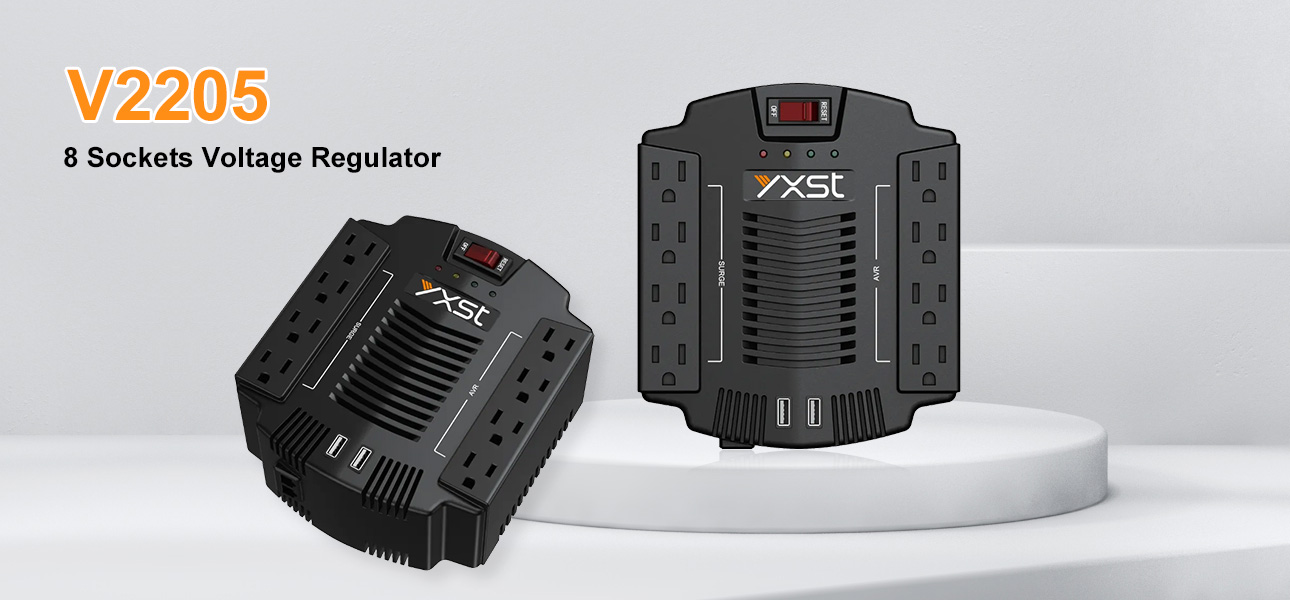UPS and AVR (Automatic Voltage Regulator) are common devices used to protect electronic devices, but which one is better for your needs? Protection against power disturbances ensures that the household devices we use are not damaged unexpectedly or accidentally. The solution to power disturbances is an Uninterruptible Power Supply (UPS) and an Automatic Voltage Regulator (AVR). But what exactly do these devices do? How do they work and which one is best for your use case scenario?
What is an Uninterruptible Power Supply (UPS)?
A UPS is a device that provides a steady current and protects your computer from power outages, surges, spikes, and general electrical noise. These devices are called UPS or Uninterruptible Power Supplies because they provide a steady supply of power during power disturbances.
These devices are often used in commercial environments that rely heavily on computers and other sensitive electronic devices to continue to operate.
A UPS consists of a battery management system, a battery (usually lithium-ion or lithium-polymer), a power inverter, and a switch that automatically switches between main power and battery power.
When a power failure occurs, a switch within the unit automatically switches power from the grid to the backup battery. The device continues to be powered (for some time) until the battery is depleted. The time will vary depending on the size and capacity of the batteries stored in the UPS.
Although primarily used for computers, UPS can also power other devices, such as game consoles and TVs. Some UPS can also charge various devices during power outages, acting as a mobile power source.
What is an Automatic Voltage Regulator (AVR)?

AVR is increasingly common in the average home, a device that helps protect your electronic devices (fridges, air conditioners, washing machines, freezers, etc.) from power surges, power outages, and fluctuations.
The main functions of an AVR include:
Voltage stabilization: By monitoring the output voltage in real-time, the excitation current is automatically adjusted to keep the output voltage within a set range.
Load regulation: When the load changes, the AVR can respond quickly to ensure that the voltage is not affected.
Protection function: When the voltage is too high or too low, the AVR can trigger a protection mechanism to avoid damage to the device.
The difference between UPS and AVR
Although UPS and AVR are voltage regulation devices that can protect your device from certain power disturbances, the amount of protection you get from each device will vary.
AVR are voltage-regulating devices that not only protect your devices from power surges but also from power fluctuations that are common in homes. Protection from power fluctuations ensures that your devices receive a steady flow of power, which can extend the life of your electronics. Typically heavier, larger, and more expensive than surge protectors, AVR are a great middle ground between surge protectors and UPSs.
UPSs offer the highest level of protection from power disturbances and are the heaviest and most expensive of the three types of voltage regulators. UPSs protect against power surges, blackouts, power fluctuations, and electrical noise. Unlike the other two devices, UPSs can also provide continuous backup power for quite some time. For these reasons, UPSs are often used in data centers, hospitals, and government agencies to ensure that data and progress are saved before a shutdown or the main backup power source kicks in.
Which device better suits your needs?

AVR are a good choice for those who want to protect their devices from power surges and fluctuations. However, due to their size and the limited number of outlets they offer (usually one to three), they are better suited for more sensitive appliances and electronics, such as computers, game consoles, and televisions.
UPS provides the highest level of protection at the expense of being large, heavy, and expensive. Due to these limitations, UPS is best used for computers and other sensitive equipment that you rely heavily on.
AVR and UPS provide different levels of protection at different price points, sizes, and weights. UPS provides backup power and power quality protection, while AVR are primarily used for voltage regulation, keeping the voltage stable.




